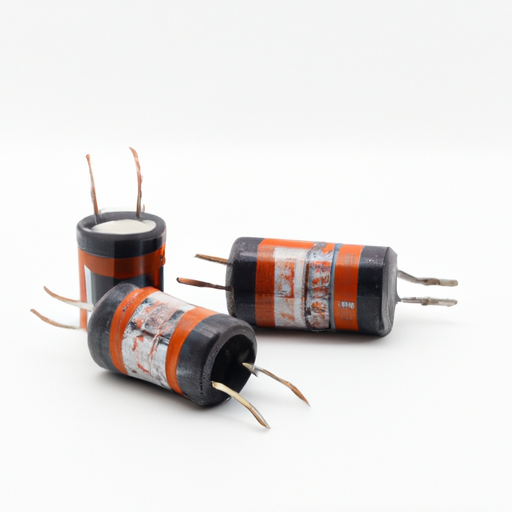Core Functional Technologies of Film Capacitors
1. Dielectric Material: Film capacitors utilize thin plastic films as the dielectric material, which can be made from various polymers such as polyester (PET), polypropylene (PP), and polycarbonate (PC). The choice of dielectric affects the capacitor's performance, including capacitance stability, temperature coefficient, and voltage rating.
2. Low ESR and ESL: Film capacitors typically exhibit low equivalent series resistance (ESR) and equivalent series inductance (ESL), making them suitable for high-frequency applications. This characteristic allows for efficient energy storage and discharge, minimizing power losses.
3. High Voltage Ratings: Film capacitors can handle high voltage applications, making them ideal for power electronics, motor drives, and renewable energy systems. Their robust construction allows them to maintain performance under high-stress conditions.
4. Temperature Stability: Many film capacitors offer excellent temperature stability, which is crucial for applications that experience varying thermal conditions. This stability ensures consistent performance over a wide temperature range.
5. Long Lifespan: Film capacitors are known for their longevity and reliability, often exceeding the lifespan of other capacitor types. This makes them a preferred choice in critical applications where failure is not an option.
6. Self-Healing Properties: Film capacitors possess self-healing capabilities, meaning that if a dielectric breakdown occurs, the capacitor can recover without permanent damage. This feature enhances reliability and reduces the risk of catastrophic failure.
Application Development Cases
1. Power Electronics: In power supply circuits, film capacitors are used for filtering and energy storage. Their low ESR and ESL characteristics make them ideal for smoothing out voltage fluctuations in DC-DC converters and inverters, improving overall efficiency.
2. Audio Equipment: High-fidelity audio systems often utilize film capacitors for coupling and bypass applications. Their low distortion and high-frequency response contribute to superior sound quality, making them a favorite among audiophiles.
3. Renewable Energy Systems: In solar inverters and wind turbine controllers, film capacitors are employed for energy storage and filtering. Their ability to handle high voltages and temperatures makes them suitable for harsh environmental conditions.
4. Motor Drives: Film capacitors are used in motor drive applications to improve power factor and reduce harmonics. Their high voltage ratings and reliability ensure efficient operation in industrial settings.
5. Telecommunications: In communication systems, film capacitors are used for signal coupling and decoupling. Their stability and low loss characteristics are essential for maintaining signal integrity in high-speed data transmission.
6. Consumer Electronics: Film capacitors are found in various consumer electronics, including televisions, computers, and appliances. They are used for power supply filtering, timing circuits, and signal processing, contributing to the overall performance and reliability of these devices.
Conclusion
The CFR-50JB-52-1M1 film capacitor exemplifies the advanced technology and versatility of film capacitors in modern electronic applications. Their unique properties, such as low ESR, high voltage ratings, and self-healing capabilities, make them indispensable in a wide range of industries, from power electronics to consumer goods. As technology continues to evolve, the demand for reliable and efficient capacitors like the CFR-50JB-52-1M1 will only increase, driving further innovation and application development.
Future Trends
As the electronics industry continues to push for higher efficiency and miniaturization, film capacitors are expected to evolve further. Innovations in dielectric materials and manufacturing processes may lead to even lower ESR and ESL values, higher capacitance densities, and improved thermal performance. Additionally, the growing emphasis on sustainability and eco-friendly materials may drive the development of biodegradable or recyclable film capacitors, aligning with global environmental goals.
In summary, the CFR-50JB-52-1M1 and similar film capacitors will play a crucial role in the future of electronics, supporting advancements in technology while meeting the demands of various applications across multiple industries.






